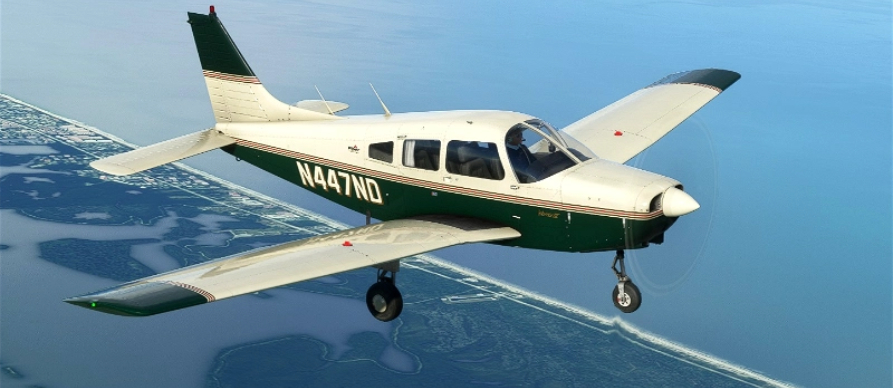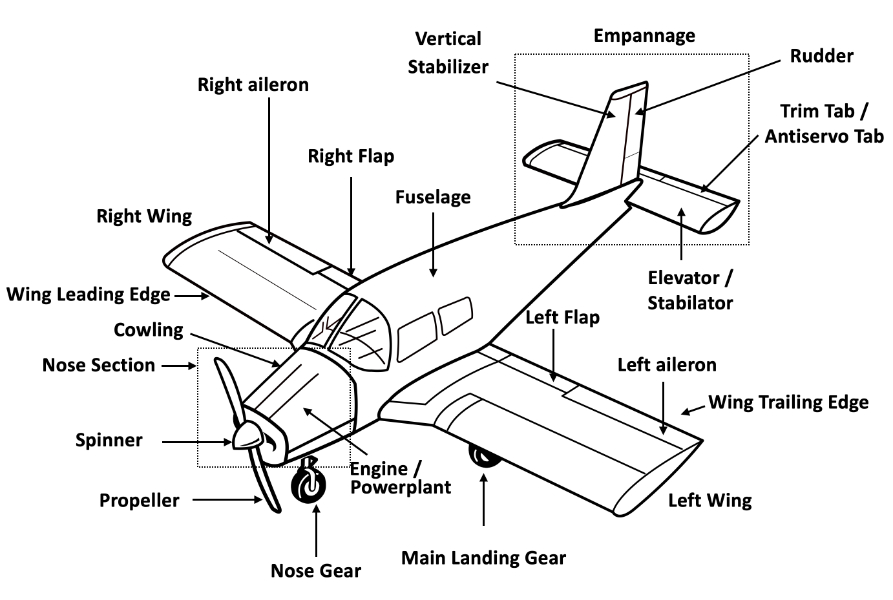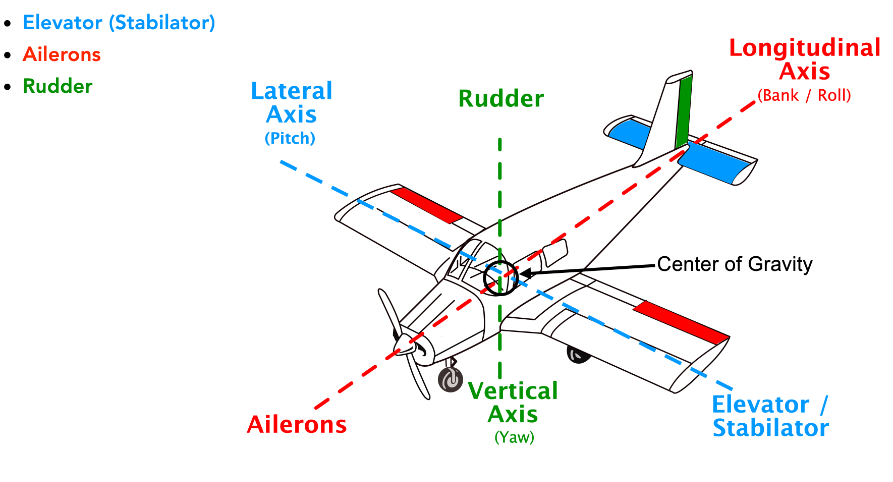
Piper Warrior
Listen to any ATC controller communicating with the pilot of a Piper Warriors and they will quickly begin to refer to them as “Cherokee”. The Piper Cherokee is the predecessor of the modern Piper Warrior III and is primarily distinguished by their double-tapered wing planform and two-foot-wider wingspans.
Earlier Cherokee wings have the blocky, squarish, constant-chord wing planforms that came to be known as “Hershey Bar” wings until the first of the Warrior series came out in 1974.
Warriors carried the PA28-151 designation until 1977 when they were superseded and the Warrior II (PA28-161) came out. The Warrior II had 10 more horsepower than the original Warrior. The Warrior II has an advertised a 127- knot cruise speed at 75-percent power (compared to the Warrior’s 109 knots). Part of the speed increase was from the more powerful engine; the rest came from improved wheel-fairing aerodynamics. This airplane is still in production today, as the Warrior III model.
From its inception, the PA-28 was meant to be an inexpensive airplane that offered benign (safe) flight characteristics and reasonable performance. The stabilator, sometimes described as a flying tail, is one of the Warrior’s distinguishing features. The entire horizontal tail pivots as one to act as the elevator. While it gives pilots a lot of pitch control, the stabilator was primarily used because it was considered more economical to build than a conventional stabilizer/elevator.
PA-28 Cherokees have stubby, constant-chord wing planforms. The inboard portion of the Warrior’s wing has a hershey bar shape, but the leading and trailing edges of the outer panels taper. This gives the Warrior a longer wingspan than the Cherokee and, thus, a higher aspect ratio (the proportion of the wingspan and the wing chord). In general, a higher aspect ratio contributes to better climb and cruise performance because of lower induced drag.
The tapered portion of the Warrior’s wing also incorporates some washout. Stand at the wingtip and sight down the leading edge, and you’ll notice that the leading edge twists slightly downward near the tip.
This decrease in the angle of incidence means that even when the wing root area has stalled, the outer portion of the wing continues to generate lift and the ailerons remain effective. All of that means the airplane is more controllable in an aerodynamic stall.
Parts of an airplane (Piper Warrior)

- Nose Section
- Propeller: Converts rotational energy from the engine into thrust. The propeller connect to the engine through the hub.
- Spinner: The cone-shaped cover that improves aerodynamics by reducing drag and houses the propeller mounting
- Cowling: The removable covering of an aircraft engine. It serves several important purposes, including aerodynamics, engine cooling, and maintenance accessibility.
- Engine: The power source for an aircraft, converting fuel into mechanical energy to generate thrust. Airplane engines come in various types, each with distinct mechanisms and applications. In training aircraft the engine is a piston engine that operate in a similar way to those used for most cars.
- Wings
- Airplane wings are responsible for generating lift and allowing it to fly. They come in various designs and configurations depending on the type of aircraft and its intended use.
- Leading Edge: The leading edge is the front part of the wing that first meets the oncoming air. It plays a crucial role in aerodynamics, lift generation, and the overall performance of the aircraft.
- Trailing Edge: The trailing edge is the rear part of the wing where the airflow over the upper and lower surfaces converges. It plays a critical role in controlling the aircraft and optimizing its aerodynamic performance.
- Ailerons: Ailerons are located on the trailing edges of an airplane’s wings, typically near the wingtips. They play a significant role in controlling the aircraft’s roll, which is essential for turning and overall maneuverability. Ailerons control the roll of an aircraft by creating differential lift between the wings. When the pilot moves the control yoke or stick left or right, one aileron deflects upward while the other deflects downward.
- Flaps: Flaps are movable surfaces located on the trailing edge of the wings. They play a crucial role in enhancing the aircraft’s lift during takeoff and landing, allowing for lower speeds and shorter runway requirements. When extended and change the wing’s shape, increasing its surface area and curvature (camber), which enhances lift. While flaps increase lift, they also increase drag, which helps slow the aircraft down during landing. By increasing drag, flaps allow for a steeper descent angle without increasing airspeed, aiding in landing on shorter runways.
- The flaps on most training aircraft are plain flaps that hinge downward from the trailing edge of the wing.
- Fuel Tanks: The Piper Warrior, has its fuel tanks integrated into its wings and has a total fuel capacity of around 50 gallons, with each wing tank holding approximately 25 gallons about 48 gallons are usable. The small amount of unusable fuel (about 2 gallons) that remains in the tanks and cannot be used by the engine. This placement helps with weight distribution and aircraft balance.
- Fuselage
- The fuselage is the main body of an aircraft, serving as the central structure to which the wings, tail, and landing gear are attached. It houses the cockpit, passenger cabin, cargo hold, and other critical components. The fuselage structure is a conventional semi-monocoque structure that combines a stressed skin with an internal framework of stringers and frames to distribute loads more effectively. This is the most common type in modern aircraft.
- Empennage: The empennage, often referred to as the “tail assembly” of an airplane comprises several parts that work together to ensure the aircraft maintains proper flight dynamics and balance.
- Rudder: The rudder is hinged surface located on the trailing edge of the vertical stabilizer. The rudder controls yaw by moving left and right, which directs the aircraft’s nose in the desired direction.
- Stabilator: (Elevator) The stabilator is a hinged aerofoil / surface located on the trailing edge of the horizontal stabilizer. The stabilator controls pitch by moving up and down, which changes the angle of attack of the stabilator.
- Trim Tab: (antiservo tab) The trim tab is small adjustable surface on the trailing edge of the stabilator which is used to relieve control pressures. The trim tab allows for fine adjustments to the control surfaces to maintain the desired flight attitude without constant control input from the pilot.
- Vertical Stabilizer: The vertical stabilizer is a fixed vertical surface mounted on the tail of the aircraft. It provides stability around the vertical axis (yaw). It helps prevent unwanted yawing or side-to-side motion.
- Wheels The Piper Warrior has a tricycle landing gear configuration. One wheel at the nose section and two main landing gear wheels under each wing.
- Main Landing Gear (wheels) The main landing gear of an airplane is a critical component designed to support the aircraft during landing and takeoff, as well as while taxiing. On a Piper Warrior they are located under the wings and consists of several key elements.
- Main Gear Struts: support the wheels and absorb shock. They usually consist of a telescoping design with hydraulic or pneumatic shock absorbers.
- Shock Absorbers: are integrated into the main gear struts to dampen and absorb the forces encountered during landing. Typically hydraulic or oleo-pneumatic systems that use a combination of oil and air pressure.
- Wheels and Tires: Provide the contact point with the ground and are equipped with tires designed to handle the stresses of landing and provide traction.
- Brakes: Equipped on the wheels to help slow down and stop the aircraft after landing. Disc brakes are used on Piper Warrior and use a hydraulic system for breaking.
- Nose Gear The nose wheel of the Piper Warrior, is part of the aircraft’s tricycle landing gear configuration. The nose wheel provides the following functions:
- Steering: The nose wheel allows the pilot to steer the aircraft on the ground, providing control during taxiing, takeoff, and landing.
- Shock Absorption: It absorbs the impact forces experienced during landing and helps in smoothing out the ride during ground operations.
- Weight Distribution: Supports the front of the aircraft and helps distribute weight evenly across the landing gear system.
- Main Landing Gear (wheels) The main landing gear of an airplane is a critical component designed to support the aircraft during landing and takeoff, as well as while taxiing. On a Piper Warrior they are located under the wings and consists of several key elements.
Primary Flight Controls
